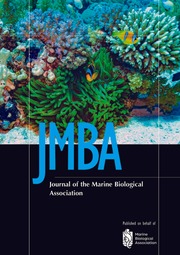No CrossRef data available.
Article contents
Host specificity of a chiton-associated flatworm based on field and laboratory observations
Published online by Cambridge University Press: 12 November 2025
Abstract
Host specificity in symbionts is a key factor driving their phylogenetic diversification. However, since the host utilization of symbionts can be influenced by environmental heterogeneity and the presence of potential hosts, a careful evaluation is necessary to clearly determine the host specificity. Stylochoplana parasitica is an acotylean flatworm that inhabits the mantle groove of the intertidal chiton Liolophura japonica around Japan. The Stylochoplana flatworms, including this species, are suggested to have evolved host specificity that has influenced their phylogenetic divergence. In this study, host specificity was examined based on field and laboratory observations. A field survey revealed that S. parasitica was exclusively found on L. japonica and not on the sympatric chiton Acanthochitona defilippii. A laboratory experiment confirmed that S. parasitica selectively attached to L. japonica, with significantly fewer individuals attaching to A. defilippii. These results suggest that the host specificity of S. parasitica is not shaped by environmental factors, but is likely the result of host adaptation. This study emphasizes the importance of combining field surveys and laboratory experiments in evaluating host specificity.
Information
- Type
- Research Article
- Information
- Copyright
- © The Author(s), 2025. Published by Cambridge University Press on behalf of Marine Biological Association of the United Kingdom.

